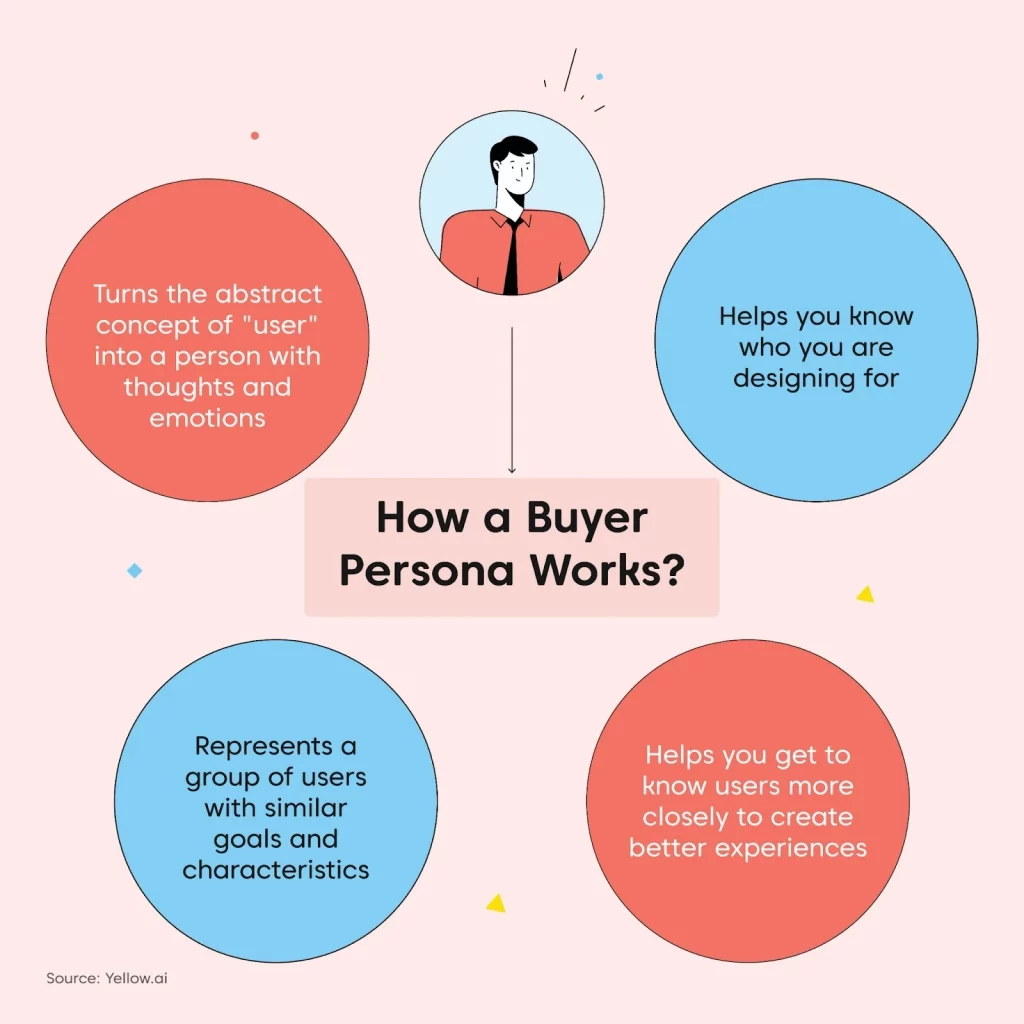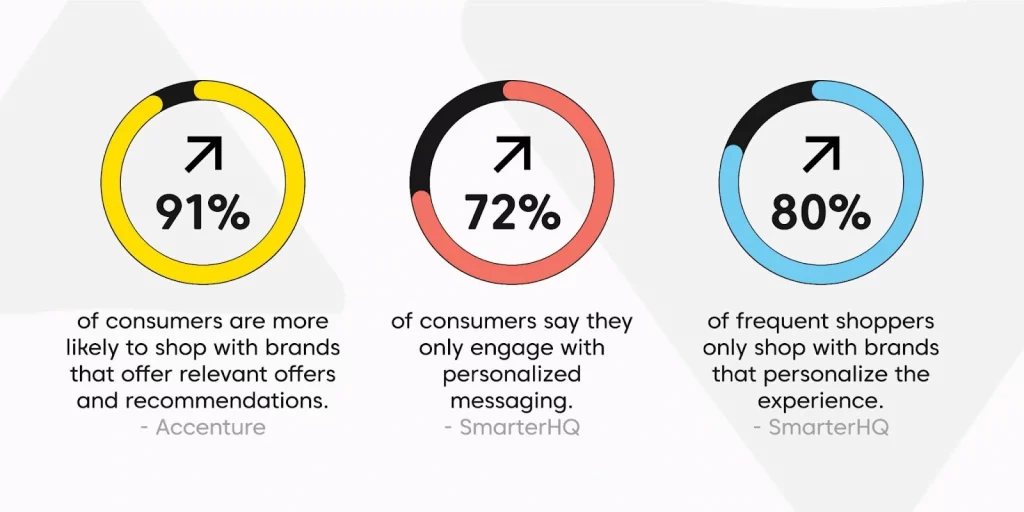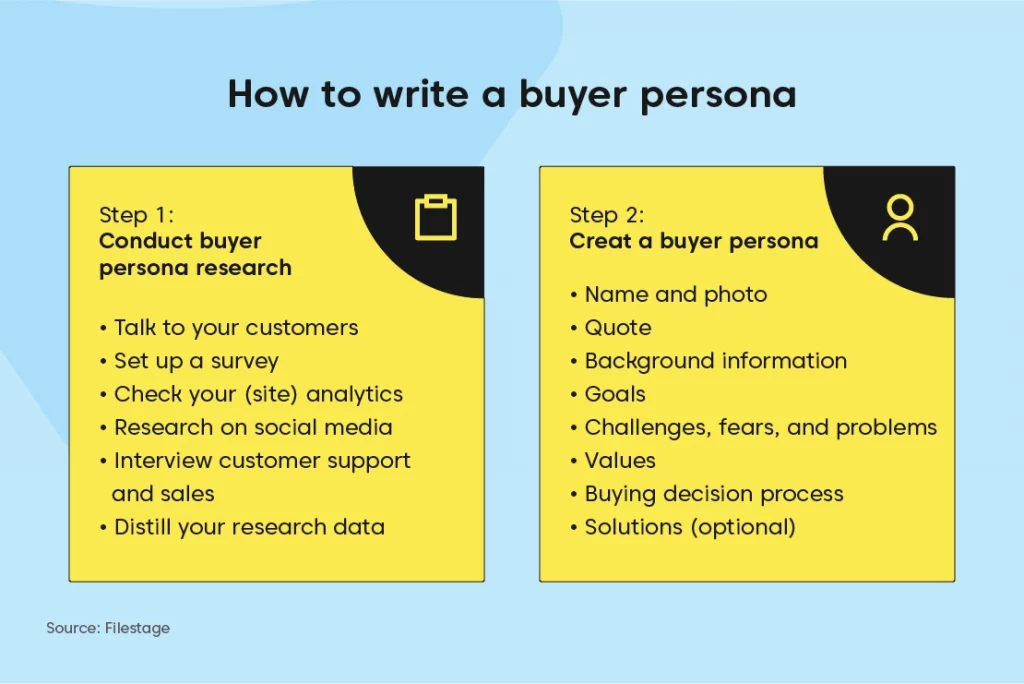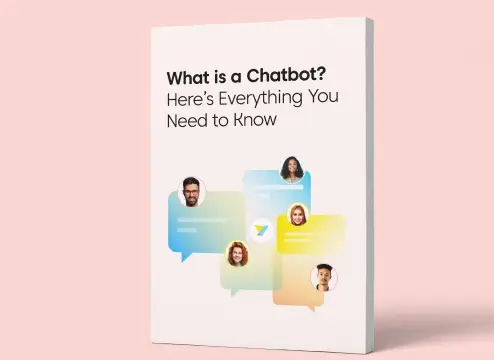Knowing your customers is the key to offering hyper-personalized experiences. Buyer personas can help you understand your customers’ specific requirements, behaviours and concerns better so that you can streamline your sales and marketing efforts, and only spend time on the leads that are most likely to convert. In this blog, you’ll learn exactly what a buyer persona is and how you can create one in 5 easy steps.
Download template to get started

Get Your Free Template
What is a buyer persona?
A buyer persona is a fictional representation of your target customer based on market research, interviews with your actual customers and some educated assumptions. It goes beyond basic demographics like location, age, gender and includes intangible elements like interests, pain points and goals.
Persona development is critical for the success of your customer experience strategy, no matter the size or scope of your business. In fact, 93% of companies who exceed lead and revenue goals segment their database by buyer persona.

Importance of creating buyer personas
Developing a buyer persona helps you deepen your knowledge about your product’s value. It enables you to identify the gaps and see the positive value it creates for your customers. By seeing how these people interact with your business, you might acquire valuable insights about your services.
1. Nurture customer relationships
For any business to succeed in today’s time, it’s important to keep customers at the heart of everything you do. Building buyer personas enables you to evaluate the goals, challenges and objections of your buyers, so that you can identify and solve them at the right time. Knowing what motivates your customers to make a buying decision allows you to give customers exactly what they need and nurture them.
2. Know where your customers are
Today’s customers expect brands to meet them where they are. Creating buyer personas can help you identify potential touchpoints throughout customer journeys, so that you can provide a seamless omnichannel experience to your customers. Companies with extremely strong omnichannel customer engagement see a 9.5% year-over-year increase in annual revenue.
3. Reduce cost per lead
With buyer personas, your campaigns hit the right target with less “waste”. This often leads to more sales without additional effort or cost on your part. By using accurate buyer personas to reduce your cost per lead, you will consistently be able to acquire better quality customers, save a few bucks and enable stronger communications.
4. Offer proactive support
Proactive customer support means offering preemptive solutions to customer problems. It’s about identifying and resolving issues even before they arise. Buyer personas help you understand what exactly makes your customer tick, so that you can design solutions accordingly.
When businesses take an active interest in customer needs, it makes the clients feel respected and valued, so they are more likely to share positive word-of-mouth with others. A recent study by Salesforce suggests that 72% of customers will share their good experiences with others.
5. Create customized experiences
When you learn everything there is to know about your customers, you realize that not all customers are the same. You may probably treat them the same way, but once you recognize that they have different needs, you no longer have to nurture them in a cookie-cutter way. Building personas gives you the ability to segment customers to offer customized experiences.

5 steps to create a buyer persona
In order to build a buyer persona you need to consolidate customer data from various sources and analyze it to unveil common customer behaviors and trends.
1. Conduct thorough research into customer behavior
Even if you think you already know your customers well, it may not be enough. It’s time to dig deep, collect customer data from various sources and start with what you know – your existing customers.
Consider sending out a short survey to your current clients to get to know them better. You might have to incentivize them to get them to fill the survey, but the insights you will gain from their answers will be worth their weight in gold. After all, the people who are already invested in your business, are your ideal audience.
2. Segment customers based on common characteristics
Now that you have plenty of information on your customers, it’s time to segment them on the basis of similarities in their goals and challenges. Segmentation of personas will further refine your target audience and help you determine how many personas you’ll actually need.
If this is the first time you’re creating buyer personas for your business, it might make the most sense to just develop personas for the market segments you sell the most. You can always add or change these personas as you gather more data on your leads and prospects.
You can also segment personas on the basis of the industry. For example, if your product or service is useful for both the banking and insurance industries, it makes sense to have two personas.
3. Create a name and story for your buyer persona
Once you have completed your research and decided what your buyer personas it, it’s time to create a narrative. Start by assigning your persona a name, it will help you develop a personal connection with them.
Once you’ve got a name in mind, start jotting down other demographics like age, profession, location, hobbies and interests. This will help you know exactly what your customers want and why they want it. You’ll also be able to improve your future interactions with them.
4. Identify goals and pain points
The key to retaining customers is to make their lives easier. You need to stay on top of their problems and help them achieve their goals. This can only happen if you have a clear understanding of their motivations and pain points. Based on your research above, identify what works and what doesn’t for your customers as well as what they are trying to achieve by interacting with your business.
5. Use personas to craft tailored marketing and sales strategies
Buyer personas help you get inside knowledge into the ways your target customers behave and function. You get to know everything from their preferred social media platforms to what problems they are trying to solve with your product or service. When you know a lot about these personas and you can use that information to your benefit, and to theirs.
Put your buyer personas goals and challenges at the centre of all your strategies. Whether it’s crafting a customer experience strategy or creating content for social media, always keep your most qualified leads in mind, only then will you start to see some serious growth.

How to collect customer data?
As we discovered above, customer data is paramount to the entire process of creating successful buyer personas. Without sufficient insights into your target customers, you will not be able to create the most accurate and effective personas. Let’s have a look at a few ways in which you can collect customer data.
1. Interview current customers
The most common way to learn about your ideal customers is to interview them. Nowadays, people hardly have the time to give interviews, it is always a better idea to use surveys to gain important insights about your customers.
To determine the kind of questions you need to ask, look at what information is most needed and think of knowledge gaps. Your sales and customer support teams can help you come up with the right questions.
2. Do competitor research
If you’re just starting out and don’t have enough customer base to interview, you can also look into your competitor’s target customers. Watch who they interact with, and their social media followers and get a scoop on their audiences. There are a plethora of analytics tools that you can use to conduct competitor analysis.
3. Conduct market research
Market research is one of the best ways to know your target customers. You can conduct focus groups and send our questionnaires to people in your target market. Collecting such data can help you identify commonalities in the data to segment your customers into groups based on different characteristics.
4. Leverage social media
You can also use social media to connect with your customers and get a closer look at the type of content they are engaging with. Keep in mind it’s not just gender, age and location that you’re looking for.
Consider what platform your customers use the most, what time of day they’re most active, what their interests are and who else they are following. You can gain so much insight into the personalities, personal and professional lives of your target customers this way.
5. Use a customer analytics platform
Instead of following a manual approach to gathering customer data, you can also use a customer analytics platform. You can get a detailed understanding of your customer’s intent and sentiments with an analytics platform. You can track their positive or negative sentimental trends to get deeper insights, not just impressions and clicks.
Yellow.ai CX analytics platform helps you track your omnichannel customer data and gives you a unified view of key metrics and behaviour trends. Our platform helps you segment your customers based on their search and purchase trends as well as identify top customer questions, pain points, interests, user journey, etc.
This will help you know what your customers are often talking about and build business strategies based on these insights to improve your CSAT and increase sales. Request a demo to know more about how our CX analytics platform can help you get deeper insights into what your users are doing and why in real-time.
Download template to get started


















